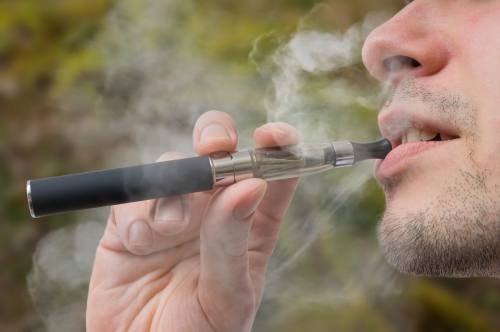(A) A person commits an offense if the person smokes in a public place or in a park.
(B) A person commits an offense if the person smokes in an enclosed area in a building or facility owned, leased, or operated by the City.
(C) A person commits an offense if the person smokes in an enclosed area of a workplace.
(D) A person commits an offense if the person smokes within 15 feet from an entrance or openable window of an enclosed area in which smoking is prohibited.
(E) The owner or operator of a public place commits an offense if the person fails to take necessary steps to prevent or stop another person from smoking in an enclosed area in a public place.
The action comes six weeks after council directed the city manager to draft code amendments that add electronic smoking devices to the city’s prohibitions against the sale, delivery and use of cigarettes and tobacco products, as well as clarify code definitions of “smoking” and “electronic smoking devices.” "Protecting the citizens of the city against ... e-cigarettes and liquid nicotine represents sound public health and fiscal policy," the ordinance reads. The audience inside the Austin City Hall was speckled with people wearing "Austin Breathes Vape Free Air" T-shirts. The vape-free campaign was led by Austin Public Health and supported by the American Heart Association and the American Cancer Society. The resolution passed by council in May alluded to reports from the U.S. Food and Drug Administration that warn against harmful health effects of using electronic smoking devices. “Laboratory tests conducted by the [FDA] have shown that electronic cigarette vapors contain carcinogens, including nitrosamines and varying levels of nicotine,” the resolution states. “E-cigarette vapors were found to contain toxic chemicals such as diethylene glycol, a common ingredient in antifreeze.”




